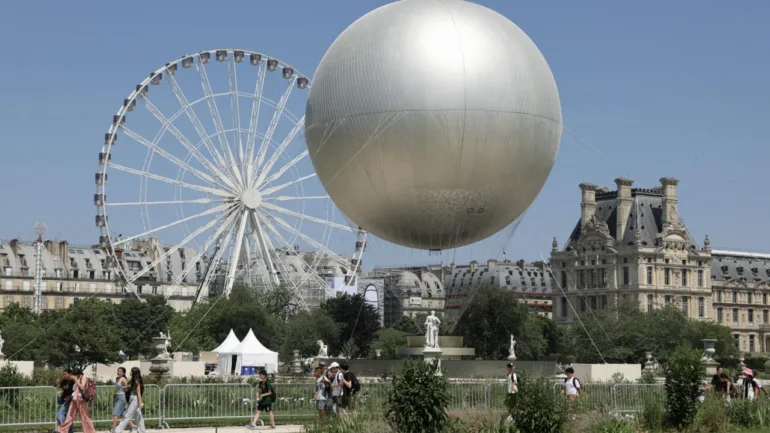The giant balloon that captured hearts and became an iconic feature of the 2024 Paris Olympics is set to return to the skies this summer. Organisers hope the revived attraction will once again draw crowds of tourists and locals alike.
During the Games, the striking Olympic cauldron—a seven-metre (23-foot) wide ring of electric fire—was suspended beneath a balloon and floated above the Tuileries Garden at sunset each day. The spectacle drew thousands who came to witness the glowing installation.
Originally designed to last only through the Olympic and Paralympic Games, the balloon’s comeback was greenlit by President Emmanuel Macron, prompting a complete technical review, according to designer Mathieu Lehanneur.
“I’m very moved to see it return,” Lehanneur told AFP. “The worst outcome would have been to let it become a grounded relic, unable to fly again.”
The balloon will take flight again on Saturday evening during France’s annual Fête de la Musique, marking the start of a new summer tradition. It will rise every evening until September 14, and organisers plan to continue the display annually until the 2028 Los Angeles Games.
Lehanneur said care was taken to keep the revival faithful to the original. “We wanted to change as little as possible—anything that did change needed to remain invisible.”
The updated version is powered by a decarbonated flame system developed by French energy company EDF, mirroring the technical setup used in 2024. According to Julien Villeret, EDF’s Director of Innovation, the new balloon is engineered to last ten times longer, now functioning for 300 days instead of just 30.
The team also enhanced the light and mist system that creates the illusion of dancing flames.
Beneath the cauldron sits a sophisticated machine room housing cables, a compressor, and a hydro-electric winch, which controls the helium-filled balloon’s ascent and descent.
“Filled with 6,200 cubic metres of helium, the balloon can lift about three tonnes, including the cauldron and all its components,” explained Jérôme Giacomoni, president of Aerophile, the company behind the balloon’s construction.
The balloon’s launch site, the Tuileries Garden, holds historical significance: it’s where French inventor Jacques Charles first flew a gas balloon on December 1, 1783—just nine days after the Montgolfier brothers launched the world’s first manned balloon flight nearby.
Visitors can check vasqueparis2024.fr for daily flight times and updates on potential cancellations due to weather.
AFP


